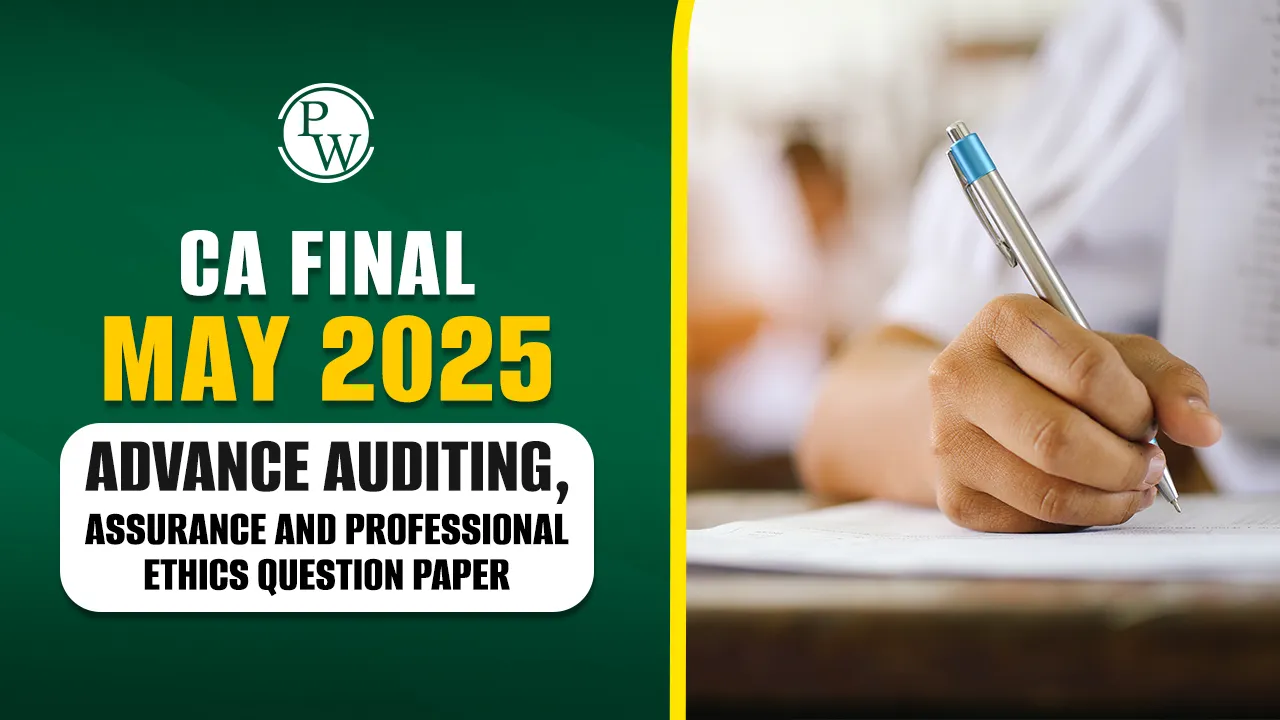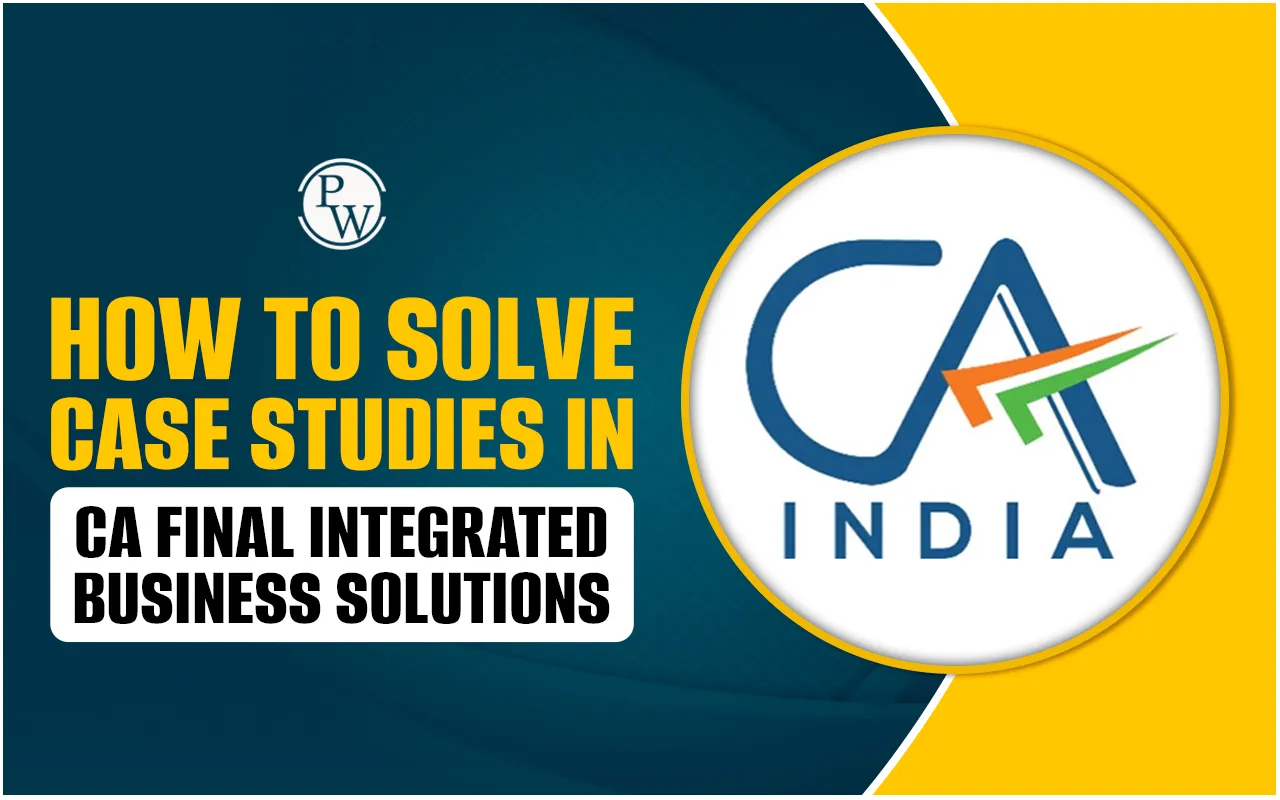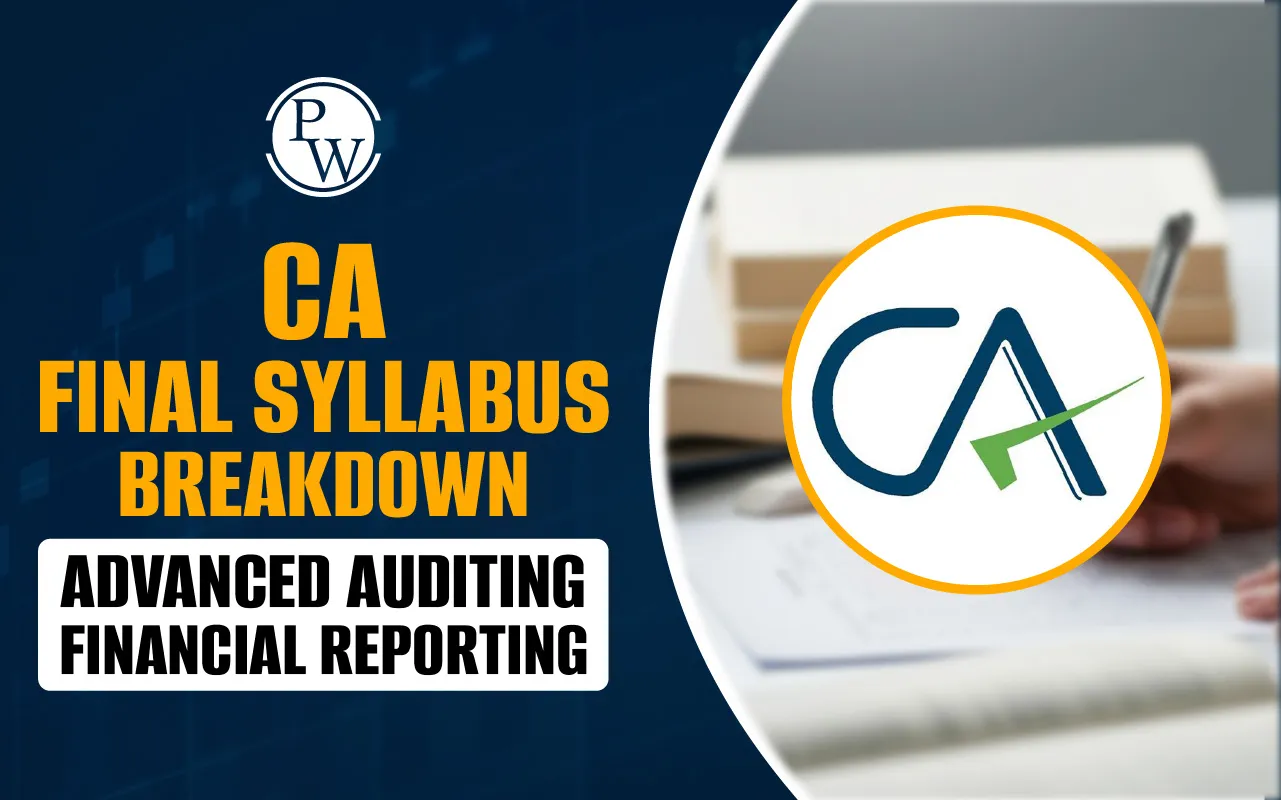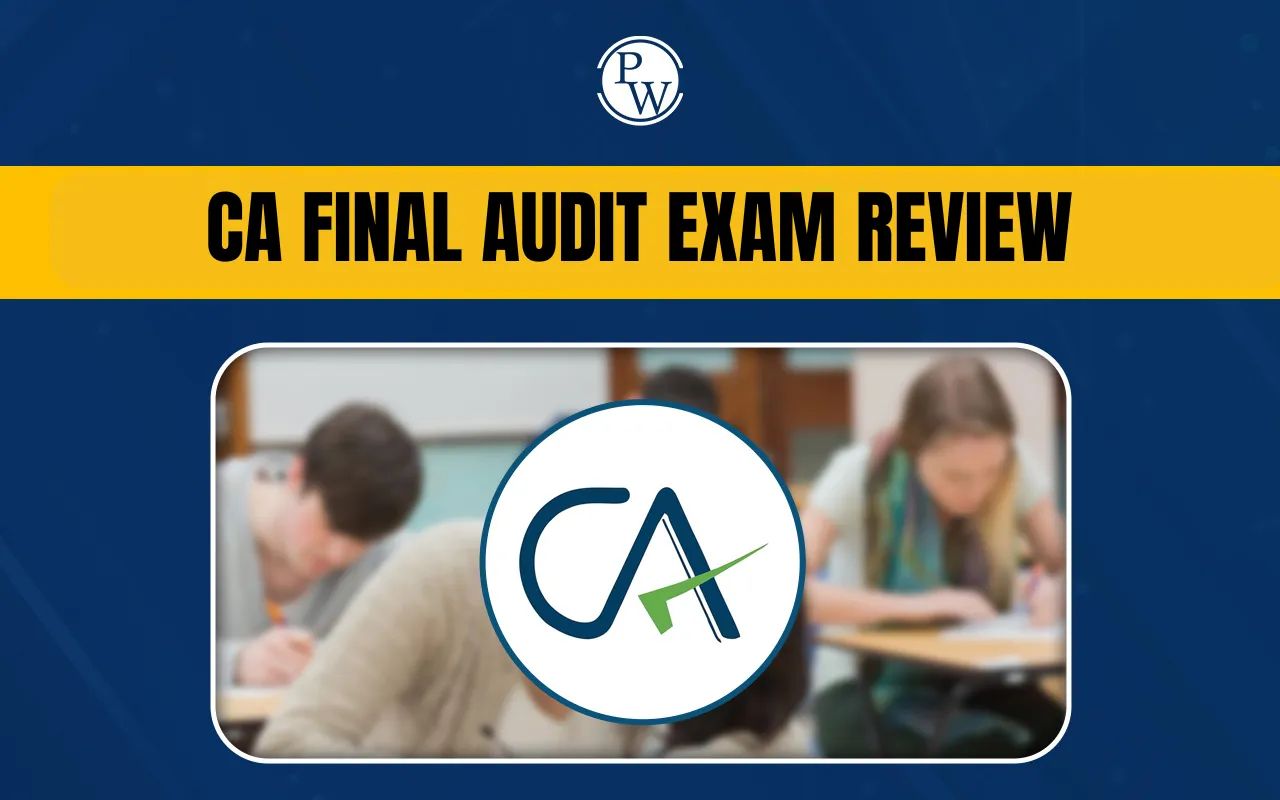
CA Final Syllabus Breakdown: ICAI designs the comprehensive syllabus for all six papers of the CA Final level. This final stage of the Chartered Accountancy course is divided into two groups, each comprising three papers. Group 1 includes some of the most critical and challenging subjects, such as Financial Reporting, Advanced Auditing, and Advanced Financial Management.
For CA Final aspirants, having a clear and detailed understanding of the topics covered in each of these papers is essential. This breakdown helps candidates understand the topics they must master to perform well in the exam. Additionally, it enables aspirants to create an effective and strategic study plan, helping them allocate their time and efforts wisely as they prepare for the CA Final.
CA Final Syllabus Breakdown Overview
The CA Final examination is meticulously designed to evaluate candidates' knowledge and skills across diverse areas of accounting and finance. The examination structure ensures a comprehensive assessment of theoretical knowledge, practical application, and professional judgment required in the field of CA. Group 1, consisting of three fundamental papers, forms the core foundation of advanced accounting and auditing knowledge essential for every CA professional.
The table below presents the key highlights of the CA final syllabus breakdown for Group 1:
| CA Final Syllabus Breakdown Paper 1 Overview | |
| Particulars | Details |
| Syllabus Creating Authority | Institute of Chartered Accountants of India (ICAI) |
| No. of Papers in Group 1 | 3 Papers |
| Paper 1 | Financial Reporting |
| Paper 2 | Advanced Auditing and Assurance |
| Paper 3 | Advanced Financial Management |
| Total Marks per Paper | 100 Marks |
| No. of Questions per Paper | 6 Questions |
| Passing Marks | 40% in each paper (minimum 40 marks out of 100) |
| Examination Pattern | Written examination with theoretical and practical questions |
CA Final Syllabus Breakdown of Financial Reporting
Financial reporting forms the basis of accounting for CA aspirants. This paper focuses on topics like Indian Accounting Standards (Ind AS) and their practical application. This paper emphasises the preparation, presentation, and analysis of financial statements in accordance with current regulatory frameworks. The comprehensive coverage of Financial Reporting topics helps candidates develop expertise in complex accounting treatments and financial statement preparation.
The topics in this paper are subdivided into the following five modules.
Financial Reporting Module 1 Syllabus
This foundational module covers the core principles and framework for Indian Accounting Standards. Here are the major topics included in Module 1 of Financial Reporting.
| Financial Reporting Module 1 Syllabus | |||
| Chapter/Unit | Topic Coverage | Key Areas | |
| Chapter 1 | Introduction to Indian Accounting Standards | Framework and adoption of Ind AS | |
| Chapter 2 | Conceptual Framework for Financial Reporting | Fundamental principles and concepts | |
| Chapter 3 | Ind AS on Presentation of Financial Statements | ||
| Unit 1 | Ind AS 1 Presentation of Financial Statements | Statement preparation and presentation | |
| Unit 2 | Ind AS 34 Interim Financial Reporting | Quarterly and half-yearly reporting | |
| Unit 3 | Ind AS 7 Statement of Cash Flows | Cash flow statement preparation | |
| Chapter 4 | Ind AS on Measurement based on Accounting Policies | ||
| Unit 1 | Ind AS 8 Accounting Policies, Changes in Estimates and Errors | Policy changes and error corrections | |
| Unit 2 | Ind AS 10 Events after the Reporting Period | Post-balance sheet events | |
| Unit 3 | Ind AS 113 Fair Value Measurement | Fair value determination methods | |
Financial Reporting Module 2 Syllabus
This module comprehensively covers the recognition, measurement, and reporting of various types of assets in financial statements. This includes both tangible and intangible assets. Unit-wise breakdown of the module 2 syllabus is presented below:
| Financial Reporting Module 2 Syllabus | |||
| Chapter | Unit | Topic Coverage | Key Areas |
| Chapter 5 | Ind AS on Assets of Financial Statements | ||
| Unit 1 | Ind AS 2 Inventories | Inventory valuation and measurement | |
| Unit 2 | Ind AS 16 Property, Plant and Equipment | Fixed asset accounting | |
| Unit 3 | Ind AS 23 Borrowing Costs | Capitalization of borrowing costs | |
| Unit 4 | Ind AS 36 Impairment of Assets | Asset impairment testing | |
| Unit 5 | Ind AS 38 Intangible Assets | Recognition and measurement | |
| Unit 6 | Ind AS 40 Investment Property | Investment property accounting | |
| Unit 7 | Ind AS 105 Non-current Assets Held for Sale | Discontinued operations | |
| Unit 8 | Ind AS 116 Leases | Lease accounting standards | |
Financial Reporting Module 3 Syllabus
This module focuses on the recognition and measurement of liabilities, complex accounting treatments for items that impact financial statements, and essential disclosure requirements for transparent financial reporting. Here is the detailed breakdown of the module 3 syllabus:
| Financial Reporting Module 3 Syllabus | |||
| Chapter | Unit | Topic Coverage | Key Areas |
| Chapter 6 | Ind AS on Liabilities of Financial Statements | ||
| Unit 1 | Ind AS 19 Employee Benefits | Pension and benefit accounting | |
| Unit 2 | Ind AS 37 Provisions, Contingent Liabilities | Liability recognition | |
| Chapter 7 | Ind AS on Items Impacting Financial Statements | ||
| Unit 1 | Ind AS 12 Income Taxes | Deferred tax accounting | |
| Unit 2 | Ind AS 21 Foreign Exchange Rate Effects | Currency translation | |
| Chapter 8 | Ind AS on Disclosures in Financial Statements | ||
| Unit 1 | Ind AS 24 Related Party Disclosures | Related party transactions | |
| Unit 2 | Ind AS 33 Earnings per Share | EPS calculations | |
| Unit 3 | Ind AS 108 Operating Segments | Segment reporting | |
Financial Reporting Module 4 Syllabus
This module covers essential areas of revenue recognition under the new standards framework. Through this module, students have to understand complex financial instruments accounting, including derivatives and hedge accounting principles.
Here are the key chapters included in module 4 of Financial Reporting syllabus:
| Financial Reporting Module 4 Syllabus | |||
| Chapter | Unit | Topic Coverage | Key Areas |
| Chapter 9 | Ind AS 115 Revenue from Contracts with Customers | Revenue recognition principles | |
| Chapter 10 | Other Indian Accounting Standards | ||
| Unit 1 | Ind AS 41 Agriculture | Agricultural accounting | |
| Unit 2 | Ind AS 20 Government Grants | Grant accounting | |
| Unit 3 | Ind AS 102 Share Based Payment | Equity compensation | |
| Chapter 11 | Financial Instruments Accounting and Reporting | ||
| Unit 1 | Financial Instruments: Scope and Definitions | Basic concepts | |
| Unit 2 | Classification and Measurement | Asset and liability classification | |
| Unit 3 | Equity and Financial Liabilities | Distinction and treatment | |
| Unit 4 | Derivatives and Embedded Derivatives | Complex instruments | |
| Unit 5 | Recognition and Derecognition | Initial and subsequent measurement | |
| Unit 6 | Hedge Accounting | Risk management accounting | |
| Unit 7 | Disclosures | Financial instrument disclosures | |
Financial Reporting Module 5 Syllabus
This advanced module covers business combinations, group accounting principles, and contemporary topics in accounting, including technology integration and professional responsibilities. This module aims to prepare candidates for complex corporate reporting scenarios.
Here are the topics included in module 5 of the CA Final Financial Reporting paper:
| Financial Reporting Module 5 Syllabus | |||
| Chapter | Unit | Topic Coverage | Key Areas |
| Chapter 12 | Ind AS 103 Business Combinations | Merger and acquisition accounting | |
| Chapter 13 | Consolidated and Separate Financial Statements | ||
| Unit 1 | Introduction to Consolidated Statements | Basic concepts | |
| Unit 2 | Important Definitions | Key terminology | |
| Unit 3 | Consolidated Financial Statements | Preparation methods | |
| Unit 4 | Ind AS 110: Consolidation Procedure | Subsidiary consolidation | |
| Unit 5 | Ind AS 111 Joint Arrangements | Joint venture accounting | |
| Unit 6 | Ind AS 28 Investments in Associates | Associate company accounting | |
| Unit 7 | Ind AS 27 Separate Financial Statements | Parent company statements | |
| Unit 8 | Disclosures | Group reporting requirements | |
| Chapter 14 | Ind AS 101 First-time Adoption | Transition to Ind AS | |
| Chapter 15 | Analysis of Financial Statements | Ratio analysis and interpretation | |
| Chapter 16 | Professional and Ethical Duty | CA professional responsibilities | |
| Chapter 17 | Accounting and Technology | Digital transformation in accounting | |
CA Final Syllabus Breakdown of Advanced Financial Management
Paper 2 of CA Final, Advanced Financial Management. focuses on strategic financial decision-making, risk management, and contemporary financial market instruments. This paper is crucial for developing expertise in complex financial analysis, investment decisions, and modern financial management techniques. All these aspects are essential for senior financial professionals. The curriculum covers both theoretical frameworks and practical applications in corporate finance and investment management.
Here is the detailed breakdown of the topics covered in the CA Final AFM syllabus:
| CA Final Syllabus Breakdown of Advanced Financial Management | ||
| Chapter | Topic Coverage | Key Learning Areas |
| Chapter 1 | Financial Policy and Corporate Strategy | Strategic financial planning and policy formulation |
| Chapter 2 | Risk Management | Enterprise risk management and mitigation strategies |
| Chapter 3 | Advanced Capital Budgeting Decisions | Complex investment appraisal techniques |
| Chapter 4 | Security Analysis | Fundamental and technical analysis of securities |
| Chapter 5 | Security Valuation | Valuation models for equity and debt securities |
| Chapter 6 | Portfolio Management | Modern portfolio theory and asset allocation |
| Chapter 7 | Securitization | Asset securitization process and instruments |
| Chapter 8 | Mutual Funds | Mutual fund operations and performance evaluation |
| Chapter 9 | Derivatives Analysis and Valuation | Options, futures, and derivative pricing models |
| Chapter 10 | Foreign Exchange Exposure and Risk Management | Currency risk management strategies |
| Chapter 11 | International Financial Management | Cross-border financial operations |
| Chapter 12 | Interest Rate Risk Management | Interest rate derivatives and hedging |
| Chapter 13 | Business Valuation | Enterprise and equity valuation methods |
| Chapter 14 | Mergers, Acquisitions and Corporate Restructuring | M&A analysis and restructuring strategies |
| Chapter 15 | Startup Finance | Venture capital and startup financing |
CA Final Syllabus Breakdown of Advanced Auditing and Assurance
Advanced Auditing and Assurance is paper 3 of CA Final level. This paper comprises topics such as auditing standards, specialised audit areas, and professional ethics. With comprehensive coverage of Paper 3 topics candidates can develop expertise in audit planning, execution, and reporting. The syllabus of Paper 3 is decided into three modules.
Advanced Auditing Module 1 Syllabus
This module establishes the core auditing framework, covering quality control systems, professional responsibilities, and the systematic approach to audit planning, risk assessment, and evidence gathering. Here is the detailed breakdown of topics covered in CA Final Advanced Auditing module 1:
| Advanced Auditing Module 1 Syllabus | ||
| Chapter | Topic Coverage | Key Learning Areas |
| Chapter 1 | Quality Control | Audit firm quality control systems |
| Chapter 2 | General Auditing Principles and Auditor Responsibilities | Professional standards and responsibilities |
| Chapter 3 | Audit Planning, Strategy and Execution | Strategic audit planning and implementation |
| Chapter 4 | Materiality, Risk Assessment and Internal Control | Risk-based audit approach |
| Chapter 5 | Audit Evidence | Evidence gathering and evaluation |
| Chapter 6 | Completion and Review | Audit completion procedures |
| Chapter 7 | Reporting | Audit reporting standards and formats |
Advanced Auditing Module 2 Syllabus
This module includes concepts for specialised auditing domains, covering industry-specific requirements, emerging digital audit techniques, and complex audit scenarios. Presented below are the key chapters and topics of CA Final Advanced Auditing module 2:
| Advanced Auditing Module 2 Syllabus | ||
| Chapter | Topic Coverage | Key Learning Areas |
| Chapter 8 | Specialised Areas | Industry-specific auditing requirements |
| Chapter 9 | Related Services | Assurance and non-assurance services |
| Chapter 10 | Review of Financial Information | Review engagement standards |
| Chapter 11 | Prospective Financial Information and Assurance Services | Forward-looking information assurance |
| Chapter 12 | Digital Auditing & Assurance | Technology-enabled audit procedures |
| Chapter 13 | Group Audits | Multi-location and subsidiary audits |
| Chapter 14 | Special Features of Audit of Banks & NBFCs | Financial services sector auditing |
Advanced Auditing Module 3 Syllabus
The last module of Advanced Auditing covers topics that strengthen candidates’ contemporary audit knowledge, including public sector auditing, internal audit functions, forensic accounting, and sustainability assurance. Additionally, candidates learn the critical area of professional ethics that governs auditor conduct and responsibilities in modern practice.
Detailed breakdown of the module 3 syllabus of Advanced Auditing is as follows:
| Advanced Auditing Module 3 Syllabus | ||
| Chapter | Topic Coverage | Key Learning Areas |
| Chapter 15 | Overview of Audit of Public Sector Undertakings | Government enterprise auditing |
| Chapter 16 | Internal Audit | Internal audit function and governance |
| Chapter 17 | Due Diligence, Investigation & Forensic Accounting | Investigative and forensic procedures |
| Chapter 18 | SDG & ESG Assurance | Sustainability and governance assurance |
| Chapter 19 | Professional Ethics & Liabilities of Auditors | Ethical responsibilities and legal liabilities |
| Also Read: | |
| CA Final Exam Form 2025 | CA Final Exam Date 2025 |
| CA Final Registration 2025 | CA Final Admit Card |
| CA Final Eligibility Criteria 2025 | CA Final Syllabus 2025 |
CA Final Syllabus Breakdown Paper 1 FAQs
Is CA final AFM difficult?
What is the syllabus for the CA final exam?
How many chapters are in CA Final Paper 2?
Which subject is most difficult in CA final?
What if I fail in one subject in CA final?










